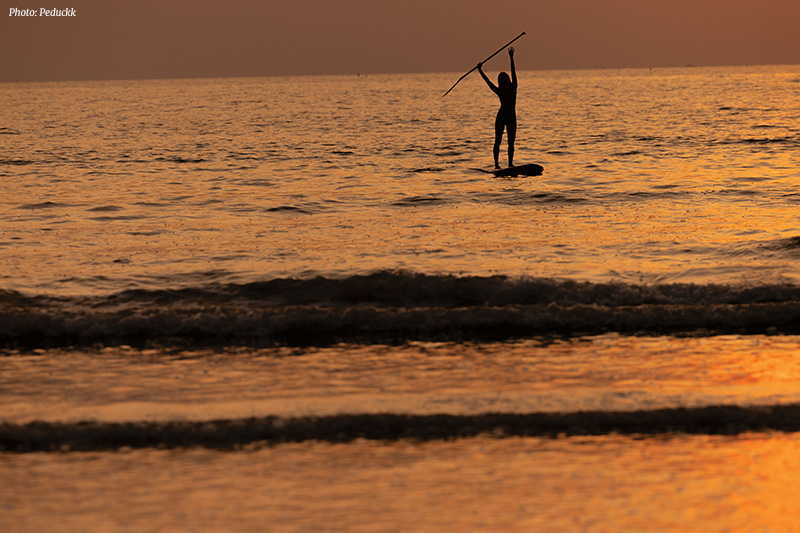
Very Samui: The Island’s Soul Revealed
A journey into the heart of Koh Samui uncovers the living heritage and cultural richness of this Thai paradise
Words Paphaon Suwannathamma
Photos Tourism Authority of Thailand, Koh Samui Office, Sawai Jarujittipun, Amnat Chotchuang, Santi Wongsawat, Peduckk, Kris Krisada, Akaphon Phongninlaarphon, Dipabhāvan Meditation Centre, Elephant Kingdom Sanctuary, Krua.co, Samaporn Boonsa, Mike Holp, and Shutterstock
Beyond the postcard image of golden beaches and stunning sunsets, Koh Samui pulses with a deeper rhythm – a gentle heartbeat of memories, myths, and the rustle of coconut palms in the sea breeze. For those who linger and listen, the island begins to reveal itself not simply as a holiday destination, but as a centuries-old living story still being written.
The roots of Samui run far deeper than most visitors realise. Archaeological sites in the southern hills have yielded bronze ritual drums etched with birds, boats, and spirit figures – a legacy of Samui’s place on the ancient maritime Silk Road. Long before hotels or guidebooks, Samui had already opened its welcoming arms to passing merchants, sailors, monks and soldiers.
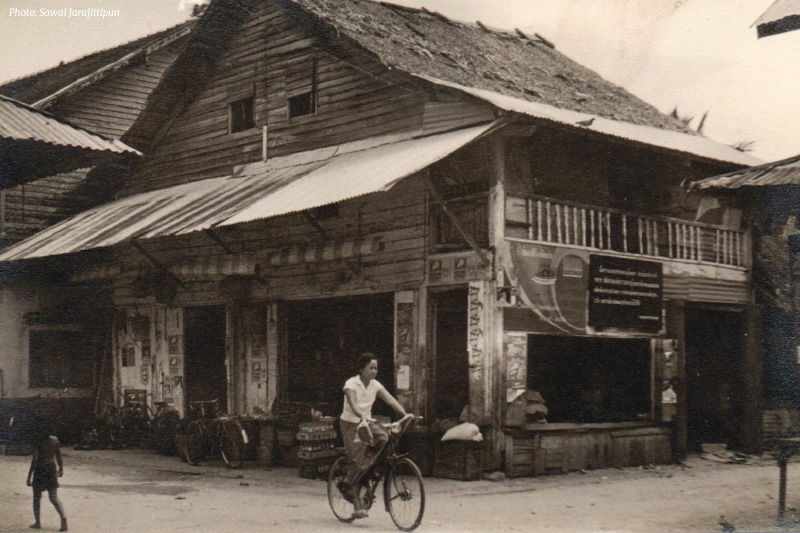
Generations of Welcome
Born in 1944, Sawai Jarujittipun – fondly known as Ko Tow – is a third-generation Samui local whose family emigrated from Hainan, China. Among the island’s merchant pioneers, they helped shape Na Thon, building the port town’s first concrete structure. Ko Tow recalls the wonder of childhood, watching Imperial Airways seaplanes land at Na Thon: “It felt like the whole world had arrived at our shore.”
His family’s business legacy began with Joo Seng Huad, a Thai- Chinese restaurant and wedding venue that later became a transistor repair shop and, eventually, Chaokoh Hotel Supplies, now a trusted partner for hospitality businesses island-wide.
This enduring spirit of adaption and heartfelt welcome still defines Samui. “In the beginning, nearly every household on the island either fished or grew coconuts. We weren’t a tourist island. We were a community. That spirit remains,” says Nittharat Vanitcharoen, Tourism Authority of Thailand (TAT) director for Koh Samui. She recalls the 1970s, when simple guesthouse rooms could be rented for 30 to 50 baht per night. While understated luxury now graces the island’s coasts, Samui remains rooted in the generosity and warmth of its heritage. “The heart of Samui hasn’t changed,” Nittharat says. “It’s still a place where strangers are treated like family.”
Unlike many islands that have lost touch with their roots, Samui still holds on to its traditions with quiet pride – its dialect, customs, cuisine, and sacred ceremonies are all woven into daily life. For Nittharat, the island’s beauty lies in its ability to balance progress with preservation: “To keep the soul of Samui alive, we must protect the harmony between culture and nature.”
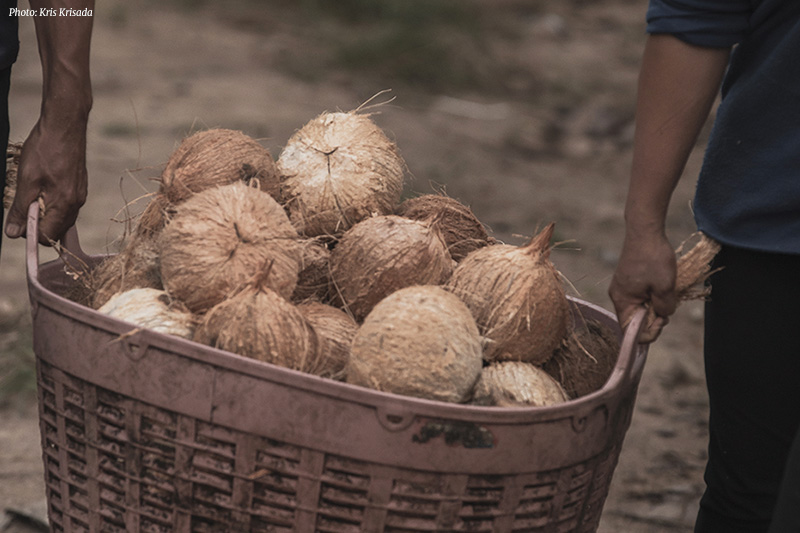
Samui Then & Now
Long before beach bars and boutique villas, Koh Samui thrived in harmony with the rhythms of land and sea. Life moved to the cycles of the tides and the harvests of coconuts, rice, and tropical fruits, while hand-built fishing boats anchored the economy and culture. Families worked together, shared meals, and lived simply. The islanders’ spirit wasn’t defined by wealth, but by a deep connection to nature and each other. “Samui wasn’t built on tourism,” says Amnat Chotchuang, the island’s deputy mayor. “It was built on community, on helping one another, and respecting the land.”
Amnat recalls his childhood, when Samui’s mangrove forests were lush and thriving – nature’s larder for locals. “Back then, the mangroves were so abundant. The sea and forest provided everything,” he reflects. Over the past decade, he has led efforts to restore and protect this vital habitat. Today, thanks to community-driven initiatives, Samui now boasts over 93 rai of rejuvenated mangrove forest. Plans are underway to turn the restored forest into an ecotourism destination, allowing future generations to experience and learn from this natural legacy.
While global tourism began to reshape the island in the 1980s, its soul endured. Today, that legacy is nurtured by respected community figures like Pa Nui (Teunjai Somwong) and Ta Jet (Somjet Somwong), leaders in sustainable living. Their organic farming, natural dam restoration, and sustainable waste management, serve as role models of circular living, where nothing goes to waste.
“Samui is home,” says Pa Nui. “And its soul is harmony – between people, nature, and tradition. We teach children that happiness doesn’t come from buying things, but from growing things.”
They’ve also redefined how the community sees waste, transforming it into opportunity. “Waste becomes a resource when it’s put in the right place,” says Ta Jet. “The moment it’s properly sorted, it holds value.”
At Na Ret, their farm doubles as a fun learning centre for younger generations. Each year, they host traditional rice-focused festivals to pass on the island’s agricultural wisdom. The highlight is Long Khaek – planting and harvesting ceremonies where villagers and children come together in shared labour and joy. Another cherished ritual is Phuk Khao, a rice-blessing ceremony that calls on deities for protection from storms and pests. For three days, the rice is spiritually guarded; on the fourth day, the harvest begins. “We don’t just grow food, we cultivate memories,” says Pa Nui.
The island may have evolved, but its heart still beats with ancestral wisdom gently guiding the present and planting seeds for the future.
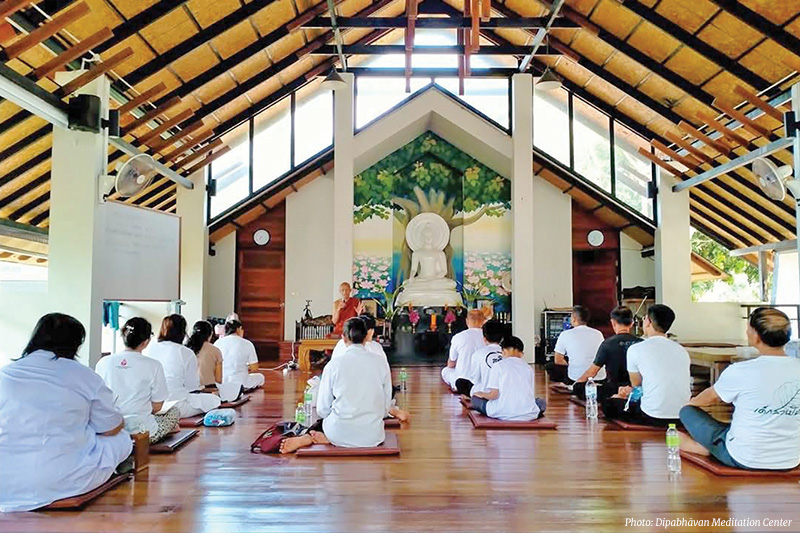
Spiritual & Cultural Heart
Temples are not merely places of worship on Koh Samui – they shape community life.
“Temples in Samui have always been more than religious sites,” says Siriwan Phongchababnapa, director of the Dipabhāvan Foundation. “They are the heart of the community, quietly guiding daily life, offering wisdom, and fostering unity.”
In earlier times, abbots often led development. “Decades ago, the abbot of Wat Lamai led villagers to carve a road through the jungle, connecting Lamai to Chaweng,” Siriwan recalls. “It was both a spiritual and social mission – people came together for the greater good.” This enduring connection between temple, home, and school formed a cultural triangle that continues to sustain Samui’s values across generations.
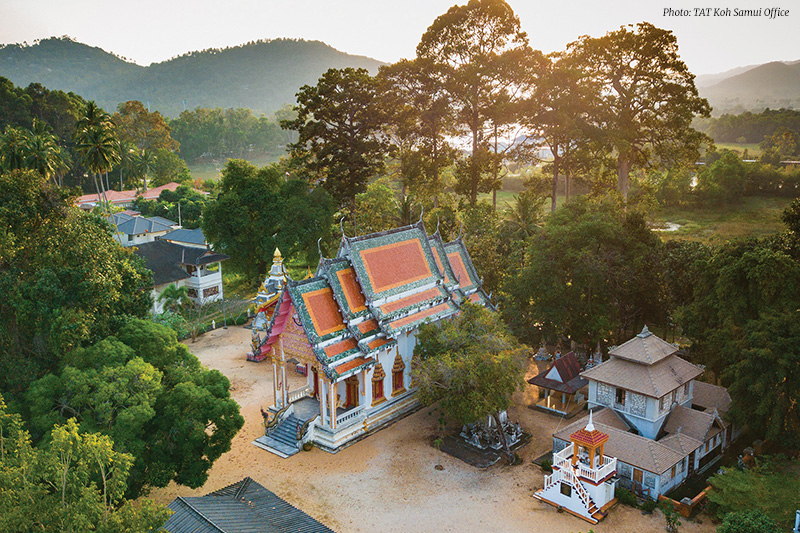
Sanctuaries of the Soul
Scattered across the island are temples that embody Samui’s spiritual soul away from the crowds, yet close to the heart.
Wat Samret: One of Samui’s oldest temples, filled with over 200 years of quiet history. Inside, more than 70 Buddha statues delicately crafted from coral stone tell stories of local devotion. The temple is revered as a site where heartfelt wishes often come true. “Children come here not just to learn rituals, but to cultivate compassion, mindfulness, and moral clarity,” says Siriwan.
Wat Khunaram: Home to the preserved body of Luang Pho Daeng Piyasilo, offering a profound reminder of impermanence. The monk’s serene, meditative form has remained intact since 1973. “He predicted his passing and left his body to remind us that spiritual practice lives beyond flesh,” shares Siriwan.
Wat Laem Sor: According to island folklore, the former abbot Luang Pho Daeng Tiso once walked on water from Koh Tan to receive alms. “Make your wish with sincerity,” locals advise, “then offer a banana and a model sailboat – these are said to calm storms and protect those at sea.”
Wat Khiri Wongkaram: Quieter than other temples, it enshrines the mummified body of Luang Pho Roem a revered monk known for sanctity and spiritual power. Locals speak of answered prayers and lost items miraculously being rediscovered after praying to him.
Wat Sila Ngu: Its sacred red sandstone glows at sunset, serving as a gathering point for both the devout and the curious. On weekends and Buddhist holy days, locals come together to chant and meditate. Its annual temple fair on April 24 is cherished as a celebration of faith, food, and community.
Wat Phra Yai: Crowned by the iconic golden Big Buddha, this is perhaps Samui’s most photographed spiritual site. The temple is a guardian, watching over the island’s transformation.
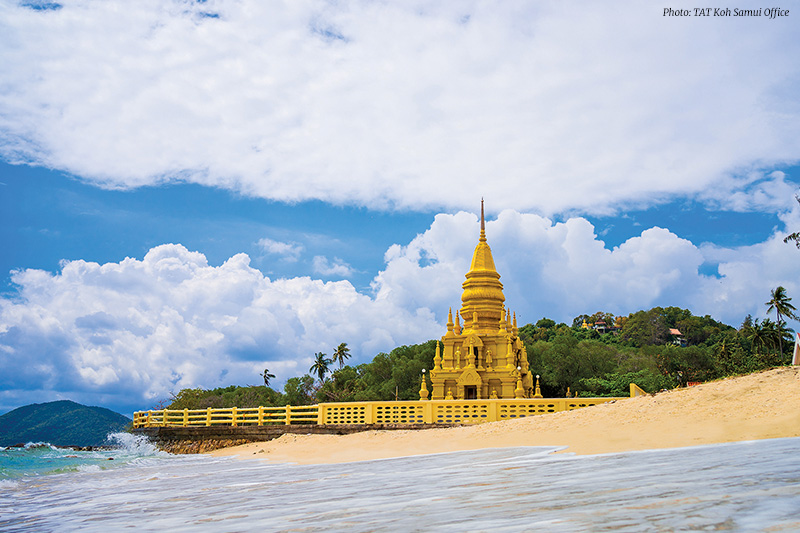
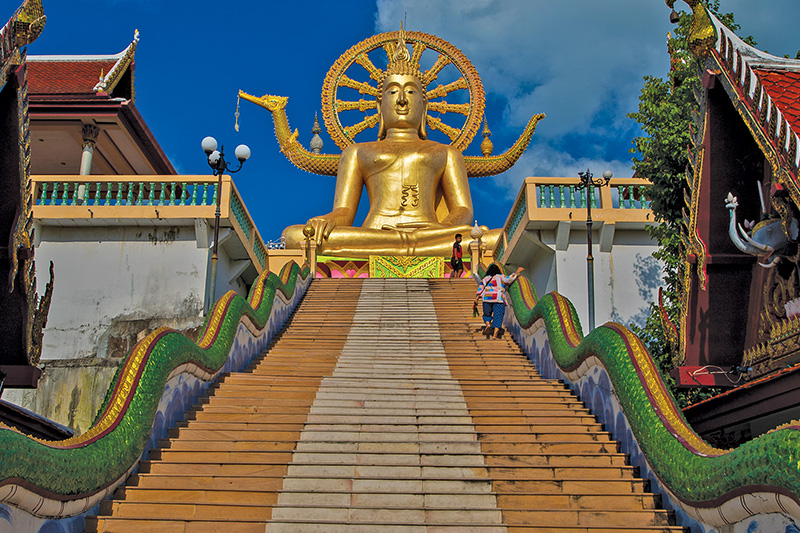
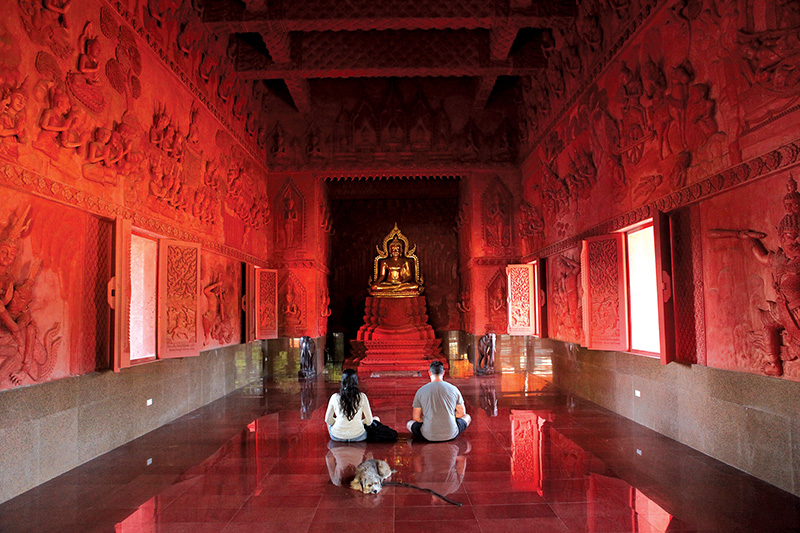
Living Dharma
At Dipabhāvan Meditation Centre, nestled in the hills of Samui, nature and wisdom coexist in quiet harmony. Established in 2004 as a branch of the renowned Suan Mokkh International Dharma Hermitage, the centre offers meditation retreats throughout the year. “True Dhamma is seeing things as they are,” Siriwan explains. “When we understand suffering, we begin to cultivate peace, calm, and usefulness – for ourselves and for others.”
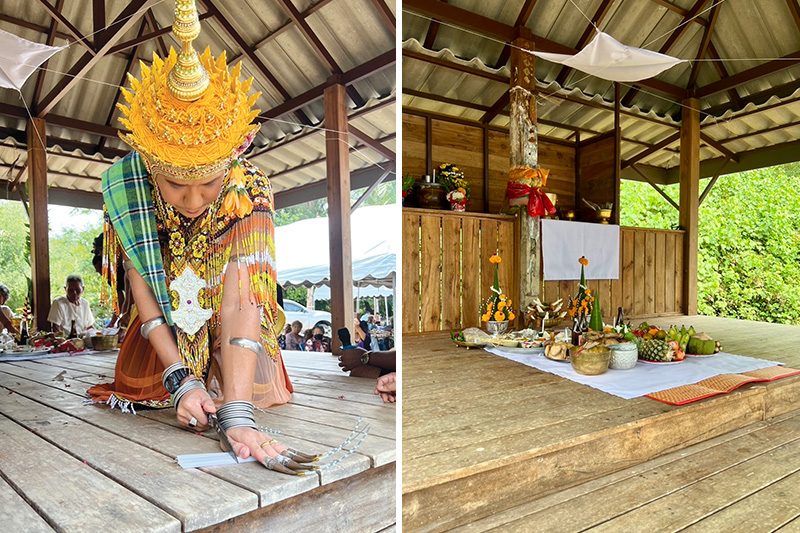
Island Rituals
Spiritual life weaves gently through Samui’s daily rhythms and age-old ceremonies. At dawn, saffron- robed monks wander the Na Thon seafront and markets gathering alms, while evening brings the sound of chanting drifting softly from village temples. Seasonal rites deepen this connection – highlighted by the Chak Phra Festival, held the day after Buddhist Lent, when ornate barges glide across land and sea, bearing Buddha images and blessings island wide.
The rare Loy Khro ritual, practiced in Baan Tai, sees bamboo- woven boats floating on immature coconuts launched into the sea. These miniature vessels carry hair, nail clippings, and offerings, symbolically casting away misfortune and illness. The ritual ends with families sharing a meal on the shore, capturing a moment of renewal
and gratitude.
The tradition of Gin Hor – literally “eating from a wrap” – reflects Samui’s communal heart. Once a practical tradition among farmers, fishermen, and travellers, today it lives on in temple fairs and beach gatherings, where sharing a simple packed meal becomes a ritual of togetherness.
Lah Pho Ta, another enduring Samui rite, honours guardian spirits of land and sea with 12 savoury and 12 sweet offerings, accompanied by the southern Manora dance. Held every June before village shrines, it is a scared moment of prayer, promise and protection.
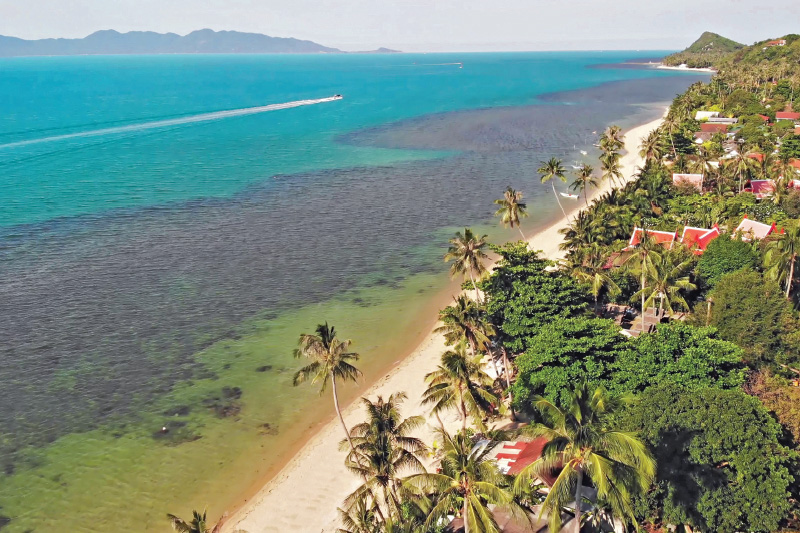
Micro-Adventures, Hidden Gems & Local Legends
Venture beyond Samui’s main roads and the island gradually reveals its quieter soul – a tapestry of stories, salty air and timeless traditions. “Visitors come for the beaches, but they remember the stories,” says Nittharat. “There’s magic in the places that maps don’t shout about.”
Begin your journey in Lipa Noi, Taling Ngam, Thong Krut, and Bang Po – peaceful pockets where coconut groves stretch to the sea and fishermen still cast their nets by hand. In these villages, you’ll find not just scenery, but the spirit of Samui.
One such place is the community of Phang Ka, nestled in a serene bay on the island’s southwest tip. Amnat, the deputy mayor, highlights the historic Phang Ka Pier – a post-World War II relic built by Japanese forces to transport minerals. “It’s more than just a pier – it’s part of our history,” he explains. “Over the years, nature has softened it, and now it’s one of the most beautiful and peaceful spots to watch the sunset.”
Today, Phang Ka remains a hidden gem, where time slows and golden light spills across quiet waters. Amnat envisions revitalising this historic site as part of a broader effort to preserve and share Samui’s lesser-known treasures.
Just offshore lies Koh Tan, a lush island where mangroves hum with rare medicinal plants and coral gardens beckon snorkellers. But there’s an eerie edge to its beauty. “Even dogs can’t survive here,” says Samaporn Boonsa, a local whose ancestors were among Koh Tan island’s first coconut farmers. “The elders say it’s something in the air – magnetic currents or vibrations. One man tried to disprove it. His dog circled the hut and howled for days.”
Nearby, Koh Mudsum is home to wild pigs and a legend of whispering midnight melodies. “In the early days, my family stopped by to stay the night. Beneath the dark sky, they heard the sound of a Javanese traditional flute and ancient drums drifting on the breeze,” says Samaporn. Once known for pearl farming, Mudsum now offers one of the island’s most breathtaking golden hour views.
Further offshore, Ang Thong National Marine Park offers the ultimate island-hopping adventure. Visitors can explore 42 emerald islets, hidden lagoons and cinematic cliffs.
Back on Samui, stroll to the Secret Buddha Garden, where moss-covered statues seem to whisper serenity. Just beyond lies the Coconut Heritage Trail at Baan Mapraow, where you can experience the art of organic coconut cultivation – from planting and harvesting to making oil. This natural haven also offers delicious local desserts made from freshly harvested coconut.
Nearby, rescue elephants roam freely at one of Samui’s top attractions. “They love mangoes, hate the heat, and munch palm leaves which helps us recycle coconut waste,” smiles Panda, a caretaker at Elephant Kingdom Sanctuary. “Our sanctuary is built on three words: ethical, freedom and love.”
Just a short ride to the coast brings you to Hin Ta Hin Yai, strange rock formations said to house the spirits of a grandmother and grandfather lost at sea on a mission to find a beautiful wife for their cherished son. “The wedding gifts he carried turned into the nearby islets,” says Nittharat.
End your exploration at Guan Yu Shrine, where Thailand’s tallest statue of the revered Chinese warrior towers 16 metres, a beacon of strength and devotion. The roots of this shrine run deep in Hua Thanon, one of Samui’s oldest Chinese-Hainanese settlements. “The founder vowed to build it if his business thrived,” says Siriwan. “It did – and so did our faith.” Today, the shrine stands as a proud symbol of cultural heritage and the community spirit that shaped the island’s soul.
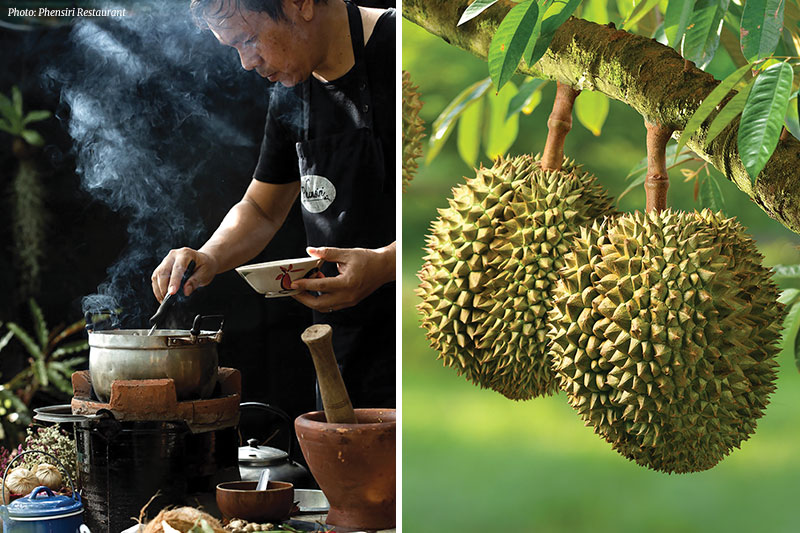
Taste the Tradition
“To understand Koh Samui, you have to taste it,” says Chef Santi Wongsawat, known to locals as Chef Aor, owner of Phensiri Restaurant, celebrated for its authentic local cuisine and sustainable approach.
“Back then, Samui was a land of coconut groves and fishing nets,” he recalls. “We didn’t have pig farms. Our protein came from the sea or backyard chickens. Buffalo meat? That was only for big village celebrations.”
Local ingredients helped carve the island’s identity. “Pla Sai [Sand whiting] was everywhere – our daily catch.” The island’s fruit trees offered seasonal treasures: Langsat, Durian, Mamud (a uniquely aromatic local mango), and Mamuang Thaai Tor – a small, crisp native mango. “As a boy, I’d climb the trees and peel the skin off with my teeth,” he says. “You never forget that taste.”
Some of Samui’s rarest dishes are kept alive in whispers carried across generations. Yam Rad Ley is a zesty salad made from a leaf found only on the island, tossed with raw fish and Kapi – fermented shrimp paste. Yam Kati Hoi Phuekan and Yam Kati Goong Chon Nam Groi are spicy coconut salads with delicately flavoured shellfish
or shrimp found in Samui’s mangroves. “When monsoon season hit,” says Chef Aor, “we’d comb the beach at dawn for flying fish eggs caught in seaweed. We’d fry them in an omelette – salty, simple, unforgettable.”
Even squid has its own Samui spin. Tom Look Em is a bold broth made with bullet-sized baby squid. For Wai Khua, reef squid is gently simmered with coconut milk over coconut husk embers. “On Samui, coconut is more than an ingredient – it’s the root of our way of life,” he adds.
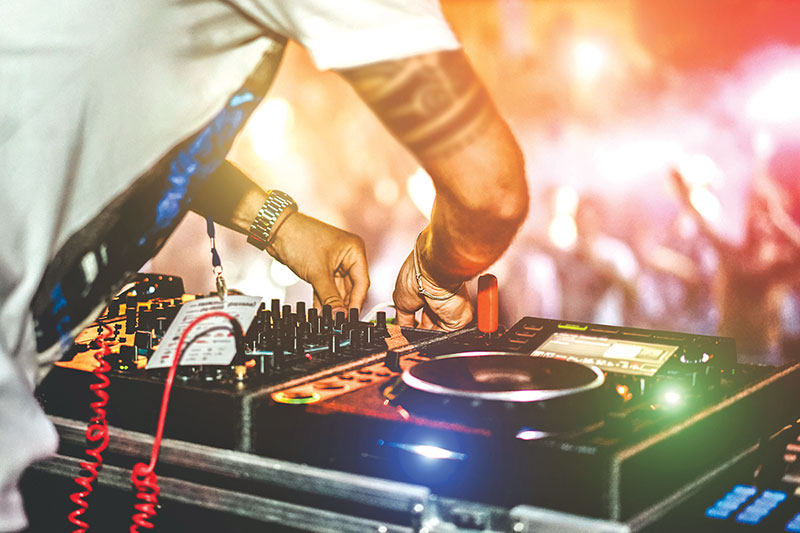
After Dark: Samui’s Ultimate Party Spirit
When the sun sets, Samui invites you to discover its wild and romantic side. The island’s nightlife is where world-class parties meet village warmth, and moonlight mingles with tradition.
From upscale beach clubs in Chaweng to beachfront gatherings in Bang Rak, Lipa Noi, and Lamai, Samui is fast emerging as Thailand’s premier party destination. International DJs, boutique music festivals, and luxury villa soirées have transformed the scene – but what truly sets Samui apart is its spirit.
“Back in the day, Samui people welcomed strangers like family,” says Nittharat. “That spirit is still alive – and it gives every event a different energy. Whether it’s Pride or a music festival, Samui celebrates with heart.”
As the gateway to Koh Phangan’s legendary Full Moon Party, Samui offers the best of both worlds – high-energy nightlife with a laid-back island vibe. “You can dance till dawn, then greet the morning with a coconut in hand, feet in the sand, and peace in
your heart. That’s what makes us different,” Nittharat adds. Here, the party is more than music and lights. It’s about connection, celebration, and being welcomed – the “Very Samui” way.
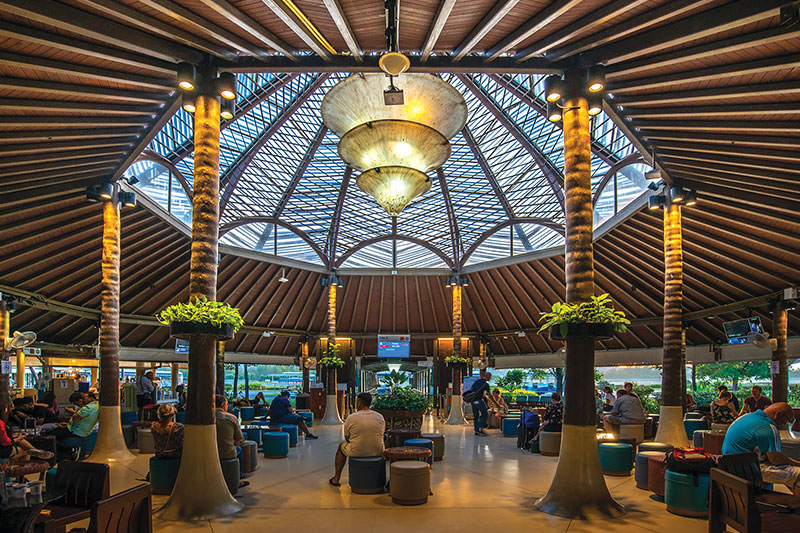
Samui Airport: Gateway to Paradise
Your Koh Samui adventure begins long before your feet touch the sand. Ranked among the most beautiful airports in the world, Samui Airport feels less like a terminal and more like a tropical resort.
Forget the sterile chill of conventional airports. Here, you’re greeted by open-air pavilions, thatched roofs, garden walkways, wooden swings, beanbags, and beach chairs – surrounded by warm island smiles. There’s no rush – only the gentle rhythm of Samui life.
Hand-built in the 1980s by local carpenters and artisans, the airport was crafted using traditional techniques and sustainable materials to create a gateway that truly reflects Samui. Even the departure lounge offers a final warming embrace: sundecks, garden views, and complimentary local snacks that feel like a farewell gift. Samui Airport is not just an entry point – it’s an introduction to the island’s spirit.
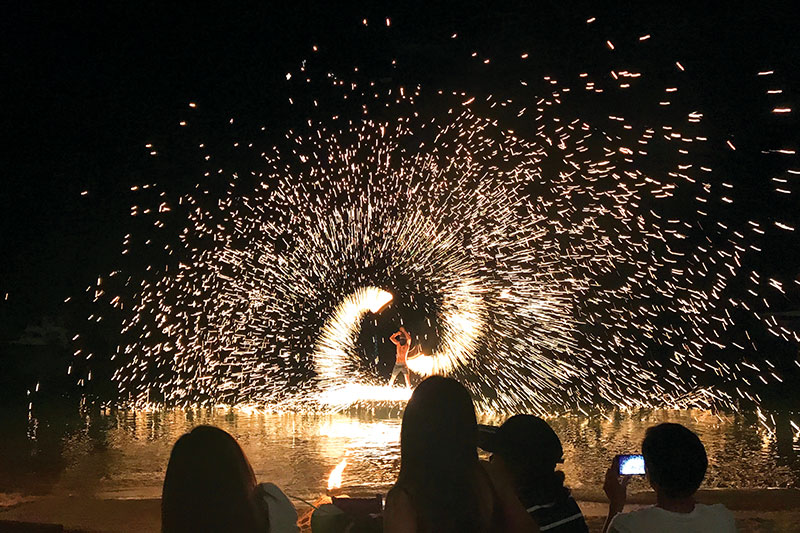
The Living Story
To truly know Samui is to look beyond its glossy surface and step into its living story – a story etched in children’s laughter during the rice harvest, in prayers whispered at dawn, in the rich taste of coconut- laced curries, and in the quiet pride of those who call the island home. Samui’s soul endures in the harmony between past and present, in the resilience of its people, and in the gentle wisdom passed from one generation to the next.
Embark on a Very Samui journey – travel as presence, where roots matter more than routes. Here, there are no souvenirs, only stories you’ll carry home.
Samui is more than an escape, it extends an invitation – to listen, to learn, and to become part of its unfolding tale.
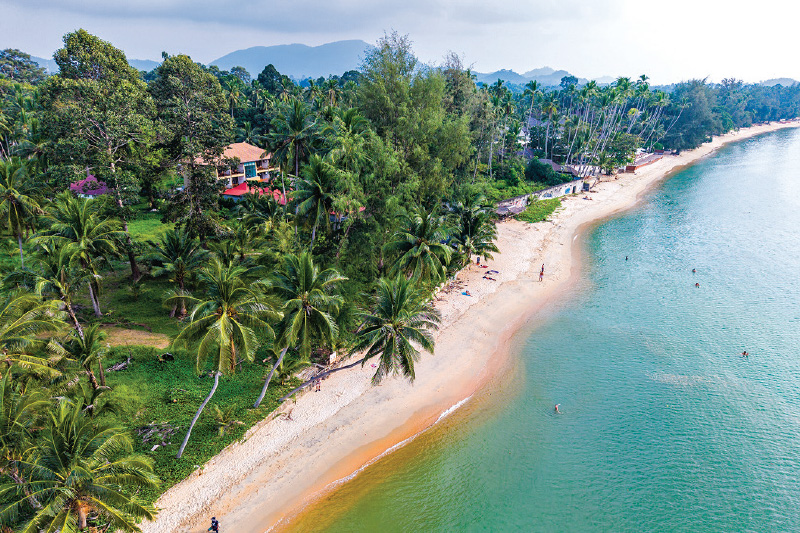
Island Words to Know
- Dai (ด๋าย, pronounced ďāy) – Yes, can do
- Mai Dai (ม่ายด๋าย, pronounced m̀āy ďāy) – No, cannot
- Em (เอม, pronounced em) – Feeling full
- Nuey Khao (เนือยข๋าว, pronounced neụ̄y k̄ȟāw) – Hungry
- Roi / Hroi (หรอย, pronounced hrɔ̀i) – Delicious, flavourful
- Jai Yen (ใจเย็น , pronounced t͡ɕaj˧ – yĕn) – Calm-hearted, composed
